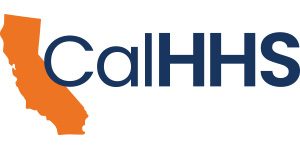August 23, 2022
Sacramento, CA – California Health & Human Services Agency (CalHHS) Secretary Dr. Mark Ghaly, along with Cal Hospital Compare, recognized hospitals across California today for their high performance in maternity care, opioid stewardship, and patient safety.
“Improving the quality of patient care in hospitals is an ongoing process,” said CalHHS Secretary Dr. Mark Ghaly. “These annual measurements through Cal Hospital Compare help us to applaud those hospitals doing excellent work and show where improvement is needed. Many patients, providers, and staff are still reeling from the impact of COVID-19, from access to services, supplies, and staffing, so it is even more important to celebrate exemplary hospital performance.”
- 108 hospitals met performance standards in maternity care.
- 76 hospitals met performance standards in opioid stewardship.
- 86 hospitals met performance standards in patient safety.
- 9 hospital met performance standards for maternity care, opioid stewardship, and patient safety.
“In particular, we’d like to applaud the following nine hospitals for achieving recognition on the Maternity Care, Opioid Care, and Patient Safety Honor Rolls,” said Secretary Ghaly.
List of hospitals achieving all 3 Cal Hospital Compare honor rolls
| Hospital name | City |
| Adventist Health Bakersfield | Bakersfield |
| Adventist Health Ukiah Valley | Ukiah |
| Barton Memorial Hospital | South Lake Tahoe |
| Enloe Medical Center | Chico |
| Marshall Medical Center | Placerville |
| Scripps Memorial Hospital Encinitas | Encinitas |
| UC Irvine Health | Orange |
| UC San Diego Health – UC San Diego Medical Center | San Diego |
| UCLA Medical Center – Santa Monica | Santa Monica |
“Cal Hospital Compare is proud to contribute to the statewide effort to improve quality in the hospital setting by providing a way to evaluate performance for hospitals in the important areas of maternity, opioid stewardship, and patient safety, while offering a roadmap for change,” said Bruce Spurlock, MD, the executive director of Cal Hospital Compare. “We invite all California hospitals to use these honor rolls as a tool to evaluate performance and benchmark against other hospitals.”
Maternity Care
For the past eight years, California has recognized hospitals that meet or exceed a statewide target for cesarean sections among low-risk, first births. Between 2014 and 2022, the percentage of hospitals meeting the target has grown from 40% to over 50%, which now represents 108 hospitals. However, there continues to be substantial variation among individual hospital rates of low-risk, first-birth c-sections. In California, these rates range from 12% to over 45% indicating the potential for further improvement. For mothers, overuse of C-sections can result in higher rates of complications like hemorrhage, transfusions, infection, and blood clots. The surgery also brings risks for babies, including higher rates of infection, respiratory complications, neonatal intensive care unit stays, and lower breastfeeding rates. The California Maternal Quality Care Collaborative collects the data and actively works with hospitals to safely reduce low-risk C-sections.
Opioid Care
Since 2019, California has recognized hospitals for their progress and performance promoting safe and effective opioid use, providing treatment for patients with opioid use disorder, providing access to naloxone to prevent opioid overdose related deaths, and reducing barriers to care by addressing stigma. In recognition of their work in 2021, 105 hospitals voluntarily reported their progress on addressing the opioid crisis. Of these hospitals, we congratulate 76 hospitals for making this year’s honor roll in one or more of the following performance categories: superior performance, excellent progress, and most improved. However, participation alone is a signal to California’s healthcare community that all 105 hospitals are actively accelerating and strengthening their opioid stewardship programs. As the opioid crisis moves from a predominant prescription drug epidemic to a fentanyl epidemic, active treatment and harm prevention strategies are also evolving. To learn more about successes and lessons learned from the most recent cohort of Opioid Care Honor Roll hospitals we invite you to read this short article and collection of case studies.
“I encourage all hospitals to participate in the Opioid Care Honor Roll program next year,” said Dr. Ghaly. “Cal Hospital Compare has numerous free resources available that will help hospitals be more effective against this epidemic. Participating in the Opioid Care Honor Roll demonstrates a hospital’s commitment to treating opioid use disorder and reducing deaths from opioid misuse.”
Patient Safety
The Patient Safety Honor Roll uses objective, publicly available patient safety measures to evaluate hospitals across a variety of domains including hospital acquired infections, adverse patient safety events, sepsis management, patient experience, and Leapfrog Hospital Safety Grade. The 2022 Patient Safety Honor Roll recognizes 86 adult, acute care hospitals with high safety profiles in comparison to other hospitals. This honor roll offers Californians a rigorously evaluated list of hospitals that have consistently demonstrated a strong culture of safety across multiple departments and offers hospitals yet another valuable tool to evaluate and celebrate their own performance in comparison to others. We’ve consistently recognized the same number of hospitals since the launch of this program, which is an indicator of the complex nature of systematically improving multiple patient safety metrics hospital wide.
For more than a decade, Cal Hospital Compare has been providing Californians with objective hospital performance ratings. Cal Hospital Compare is a nonprofit organization governed by a multistakeholder board that includes representatives of hospitals, purchasers, consumer groups, and health plans. It uses an open and collaborative process to aggregate public data and establish relevant measures and scoring.



